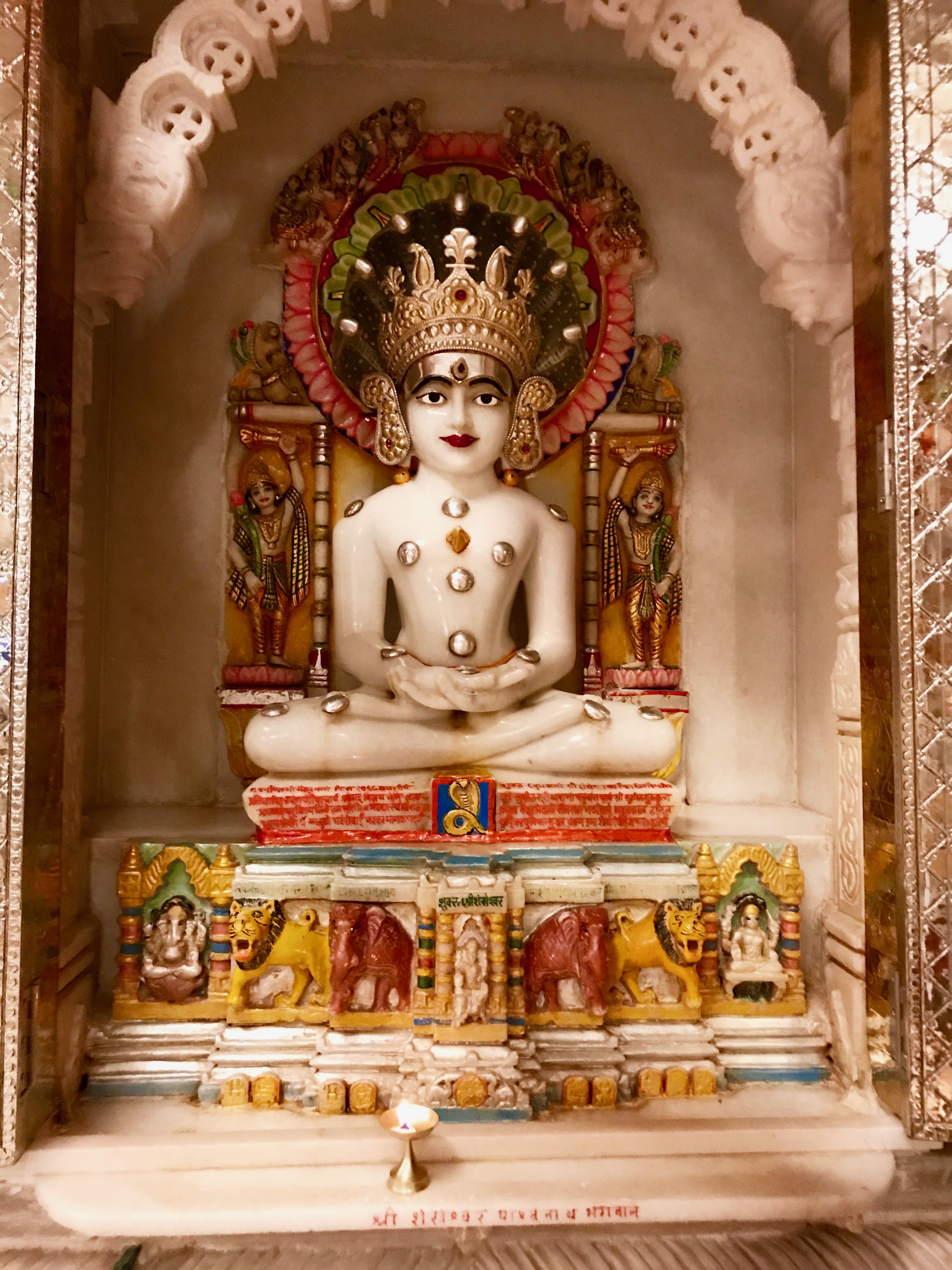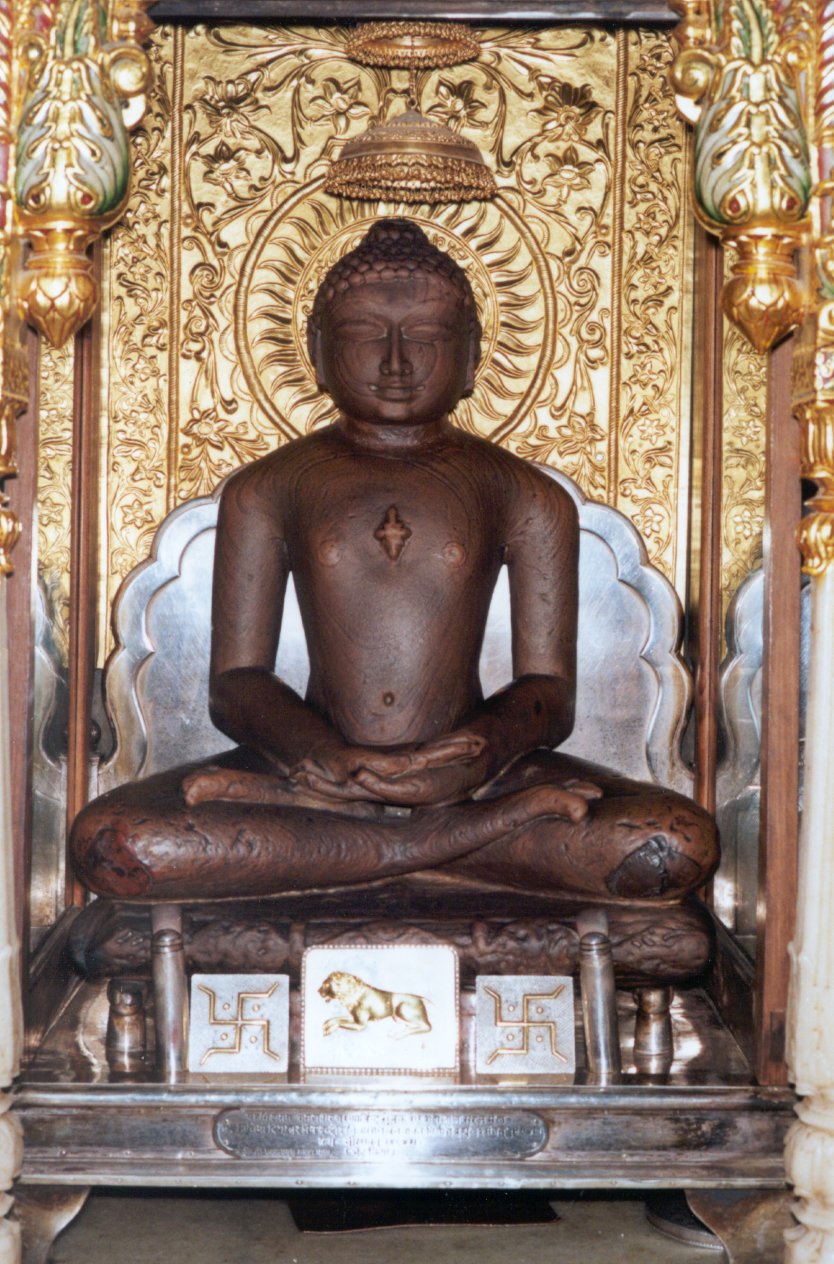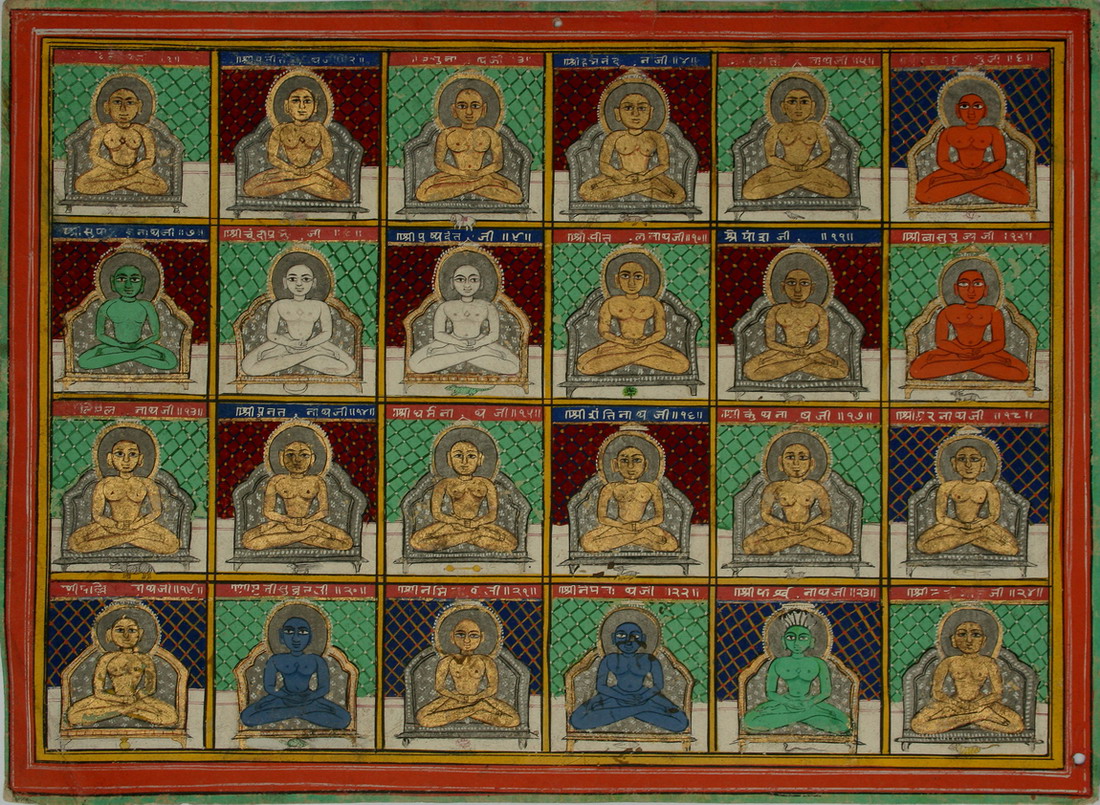|
Sivabhuti
Sivabhuti was a Jain monk of the 1st century CE who is regarded as the founder of the Digambara tradition in 82 AD, according to the 5th-century Śvetāmbara text ''Avashyak Bhashya'', authored by Jinabhadra. Very little is known about him, apart from a single story mentioned in this ancient Śvetāmbara work. Among several modern works on Jainism, '' The Jains'', by Paul Dundas, also refers to Sivabhuti and recounts the story. Background Śvetāmbara texts accuse Sivabhuti of initiating the Digambara tradition through "eight concealments", which involved the rejection of Jain scriptures upheld and preserved by the Śvetāmbaras. These texts openly and directly charge him with a serious misinterpretation of the scriptures and traditional Jain doctrines, particularly concerning the wearing of clothes and ''strī nirvāṇa'' (the attainment of liberation by women). Scholarly views Although some scholars differ on the interpretation of the term ''Botika'', the majority agree ... [...More Info...] [...Related Items...] OR: [Wikipedia] [Google] [Baidu] |
Jainism
Jainism ( ), also known as Jain Dharma, is an Indian religions, Indian religion whose three main pillars are nonviolence (), asceticism (), and a rejection of all simplistic and one-sided views of truth and reality (). Jainism traces its spiritual ideas and history through the succession of twenty-four , supreme preachers of ''dharma''. The first in the current time cycle is Rishabhadeva, who tradition holds lived millions of years ago; the 23rd is Parshvanatha, traditionally dated to the 9th century Common Era, BCE; and the 24th is Mahāvīra, Mahavira, who lived . Jainism is considered an eternal ''dharma'' with the guiding every time cycle of the Jain cosmology, cosmology. Central to understanding Jain philosophy is the concept of ''bhedavijñāna'', or the clear distinction in the nature of the soul and non-soul entities. This principle underscores the innate purity and potential for liberation within every Jīva (Jainism), soul, distinct from the physical and menta ... [...More Info...] [...Related Items...] OR: [Wikipedia] [Google] [Baidu] |
Śvetāmbara
The Śvetāmbara (; also spelled Shwetambara, Shvetambara, Svetambara or Swetambara) is one of the two main branches of Jainism, the other being the Digambara. ''Śvetāmbara'' in Sanskrit means "white-clad", and refers to its ascetics' practice of wearing white clothes, which sets it apart from the ''Digambara'' or "sky-clad" Jains whose ascetic practitioners go nude. Śvetāmbaras do not believe that ascetics must practice nudity. The Śvetāmbara and Digambara traditions have had historical differences ranging from their dress code, their temples and iconography, attitude towards Jain nuns, their legends and the texts they consider as important. Śvetāmbara Jain communities are currently found mainly in Gujarat, Rajasthan and coastal regions of Maharashtra. According to Jeffery D. Long, a scholar of Hindu and Jain studies, about four-fifths of all Jains in India are Śvetāmbaras. History and lineage Śvetāmbaras consider themselves to be the original followers of Maha ... [...More Info...] [...Related Items...] OR: [Wikipedia] [Google] [Baidu] |
Digambara
''Digambara'' (; "sky-clad") is one of the two major Jain schools and branches, schools of Jainism, the other being ''Śvetāmbara'' (white-clad). The Sanskrit word ''Digambara'' means "sky-clad", referring to their traditional monastic practice of neither possessing nor wearing any clothes. Nakedness was the ideal practice of lord Mahavira and his immediate followers. Mahavira emphasized the importance of nakedness for monks. It symbolizes complete detachment and is an ideal form of conduct. Mahavira believed that renouncing clothes made the body immune to external influences like heat and cold, increasing resilience. Without clothes, a monk would avoid the distractions of acquiring, maintaining, and washing garments, allowing him to focus on spiritual growth and self-discipline. Digambara and Śvetāmbara traditions have had historical differences ranging from their dress code, their temples and iconography, attitude towards female monastics, their legends, and the texts the ... [...More Info...] [...Related Items...] OR: [Wikipedia] [Google] [Baidu] |
Year Of Birth Unknown
A year is a unit of time based on how long it takes the Earth to orbit the Sun. In scientific use, the tropical year (approximately 365 solar days, 5 hours, 48 minutes, 45 seconds) and the sidereal year (about 20 minutes longer) are more exact. The modern calendar year, as reckoned according to the Gregorian calendar, approximates the tropical year by using a system of leap years. The term 'year' is also used to indicate other periods of roughly similar duration, such as the lunar year (a roughly 354-day cycle of twelve of the Moon's phasessee lunar calendar), as well as periods loosely associated with the calendar or astronomical year, such as the seasonal year, the fiscal year, the academic year, etc. Due to the Earth's axial tilt, the course of a year sees the passing of the seasons, marked by changes in weather, the hours of daylight, and, consequently, vegetation and soil fertility. In temperate and subpolar regions around the planet, four seasons ar ... [...More Info...] [...Related Items...] OR: [Wikipedia] [Google] [Baidu] |
Routledge
Routledge ( ) is a British multinational corporation, multinational publisher. It was founded in 1836 by George Routledge, and specialises in providing academic books, academic journals, journals and online resources in the fields of the humanities, behavioral science, behavioural science, education, law, and social science. The company publishes approximately 1,800 journals and 5,000 new books each year and their backlist encompasses over 140,000 titles. Routledge is claimed to be the largest global academic publisher within humanities and social sciences. In 1998, Routledge became a subdivision and Imprint (trade name), imprint of its former rival, Taylor & Francis, Taylor & Francis Group (T&F), as a result of a £90-million acquisition deal from Cinven, a venture capital group which had purchased it two years previously for £25 million. Following the merger of Informa and T&F in 2004, Routledge became a publishing unit and major imprint within the Informa "academic publishing ... [...More Info...] [...Related Items...] OR: [Wikipedia] [Google] [Baidu] |
Moksha
''Moksha'' (; , '), also called ''vimoksha'', ''vimukti'', and ''mukti'', is a term in Jainism, Buddhism, Hinduism, and Sikhism for various forms of emancipation, liberation, '' nirvana'', or release. In its soteriological and eschatological senses, it refers to freedom from '' saṃsāra'', the cycle of death and rebirth. In its epistemological and psychological senses, ''moksha'' is freedom from ignorance: self-realization, self-actualization and self-knowledge. In Hindu traditions, ''moksha'' is a central concept and the utmost aim of human life; the other three aims are ''dharma'' (virtuous, proper, moral life), '' artha'' (material prosperity, income security, means of life), and '' kama'' (pleasure, sensuality, emotional fulfillment). Together, these four concepts are called Puruṣārtha in Hinduism. In some schools of Indian religions, ''moksha'' is considered equivalent to and used interchangeably with other terms such as ''vimoksha'', ''vimukti'', '' kaivalya'' ... [...More Info...] [...Related Items...] OR: [Wikipedia] [Google] [Baidu] |
Uttaradhyayana
Uttaradhyayana or Uttaradhyayana Sutra is one of the most important sacred books of Jains. It consists of 36 chapters, each of which deals with aspects of Jain doctrine and discipline. It is believed by some to contain the actual words of Bhagwan Mahavira (599/540 - 527/468 BCE) - the 24th Tirthankara in Jainism. See also * List of Jain texts Jain literature () refers to the literature of the Jain religion. It is a vast and ancient literary tradition, which was initially transmitted orally. The oldest surviving material is contained in the canonical ''Jain Agamas'', which are wri ... References Citations Sources * * * *''Uttarādhyayanasūtra'', in Pupphabhikkhū (ed.), ''Suttāgame'', vol. 2, Gurgaon, 1954. External links * Jacobi, Hermann (trans., 1895), ''Jaina Sutras, Part II: The Uttarâdhyayana Sûtra; The Sûtrakritâṅga Sûtra''. (Oxford: The Clarendon Press). Available asacred-texts.comand thWisdom Library Jain texts {{Jainism-book-stub ... [...More Info...] [...Related Items...] OR: [Wikipedia] [Google] [Baidu] |
Ācārāṅga Sūtra
The Ācārāṅga Sūtra, the foremost and oldest Jain text (''First book'' c. 5th–4th century BCE; Second book c. Late 4th–2nd century BCE), is the first of the twelve Angas, part of the agamas which were compiled based on the teachings of 24th Tirthankara Mahavira. The existing text of the Ācārāṅga Sūtra which is used by the Śvetāmbara sect of Jainism was recompiled and edited by Acharya Devardhigani Kshamashraman, who headed the council held at Valabhi c. 454 CE. The Digambaras do not recognize the available text, and regard the original text as having been lost in its original form. The Digambara text, '' Mulachara'' is said to be derived from the original Ācārāṅga Sūtra and discusses the conduct of a Digambara monk. Introduction The Ācārāṅga Sūtra is the oldest agama, from a linguistic point of view, written in Ardhamagadhi Prakrit. The Sutra contains two books, or Srutaskandhas. The first book is the older part, to which other treatises were la ... [...More Info...] [...Related Items...] OR: [Wikipedia] [Google] [Baidu] |
Tirthankara
In Jainism, a ''Tirthankara'' (; ) is a saviour and supreme preacher of the ''Dharma (Jainism), dharma'' (righteous path). The word ''tirthankara'' signifies the founder of a ''Tirtha (Jainism), tirtha'', a fordable passage across ''Saṃsāra (Jainism), saṃsāra'', the sea of interminable birth and death. According to Jains, ''tirthankaras'' are the supreme preachers of ''dharma'', who have conquered ''saṃsāra'' on their own and made a path for others to follow. After understanding the true nature of the self or soul, the ''Tīrthaṅkara'' attains ''kevala jnana'' (omniscience). A Tirthankara provides a bridge for others to follow them from ''saṃsāra'' to ''moksha'' (liberation). In Jain cosmology, the wheel of time is divided into two halves, Utsarpiṇī', the ascending time cycle, and ''avasarpiṇī'', the descending time cycle (said to be current now). In each half of the cycle, exactly 24 ''tirthankaras'' grace this part of the universe. There have been infini ... [...More Info...] [...Related Items...] OR: [Wikipedia] [Google] [Baidu] |
Jambuswami
Jambuswami (543-449 BCE) was the spiritual successor of Sudharmaswami in Jain religious order reorganised by Mahavira. He remained the head for 39 or 44 years, after which he is believed to have gained '' Kevala Jnana'' (omniscience). He is believed to be the third and last '' kevali'' (omniscient being) after Mahavira in Jain tradition. He is believed to have attained ''moksha'' (liberation) at the age of 84 in Mathura. Jambu was succeeded by Prabhava (443-338 BCE), who was converted from a bandit by him. Prabhava was succeeded by Shayyambhava (377-315 BCE). Shayyambhava composed ''Dasavaikalika sutra'' after studying the fourteen ''purvas'' (pre-canonical texts). He was initiated as a Jain monk. He initiated his son as a monk at the age of eight and taught him sacred knowledge in 10 lectures in six months after which the latter died. Shayyambhava was succeeded by Yasobhadra (351-235 BCE), who was succeeded by his two disciples, Sambhutavijaya (347-257 BCE) and Bhadrabahu ( ... [...More Info...] [...Related Items...] OR: [Wikipedia] [Google] [Baidu] |
Moksha
''Moksha'' (; , '), also called ''vimoksha'', ''vimukti'', and ''mukti'', is a term in Jainism, Buddhism, Hinduism, and Sikhism for various forms of emancipation, liberation, '' nirvana'', or release. In its soteriological and eschatological senses, it refers to freedom from '' saṃsāra'', the cycle of death and rebirth. In its epistemological and psychological senses, ''moksha'' is freedom from ignorance: self-realization, self-actualization and self-knowledge. In Hindu traditions, ''moksha'' is a central concept and the utmost aim of human life; the other three aims are ''dharma'' (virtuous, proper, moral life), '' artha'' (material prosperity, income security, means of life), and '' kama'' (pleasure, sensuality, emotional fulfillment). Together, these four concepts are called Puruṣārtha in Hinduism. In some schools of Indian religions, ''moksha'' is considered equivalent to and used interchangeably with other terms such as ''vimoksha'', ''vimukti'', '' kaivalya'' ... [...More Info...] [...Related Items...] OR: [Wikipedia] [Google] [Baidu] |
Non-possession
Non-possession (, ) is a religious tenet followed in Buddhist, Hindu, and Jain traditions in South Asia. In Jainism, is the virtue of non-possessiveness, non-grasping, or non-greediness. is the opposite of . It means keeping the desire for possessions to what is necessary or important, which depends on one's life stage and context. The precept of is a self-restraint ( temperance) from the type of greed and avarice where one's own material gain or happiness comes by hurting, killing, or destroying other human beings, life forms, or nature. is related to and in part a motivator of (proper charity), both from giver's and receiver's perspective. Non-possession is one of the principles of , a philosophical system based on various religious and philosophical traditions originating in India and Asia Minor, and put into practice by Mahatma Gandhi as part of his nonviolent resistance. This particular iteration of is distinct because it is a component of Gandhi's active non-violent ... [...More Info...] [...Related Items...] OR: [Wikipedia] [Google] [Baidu] |






